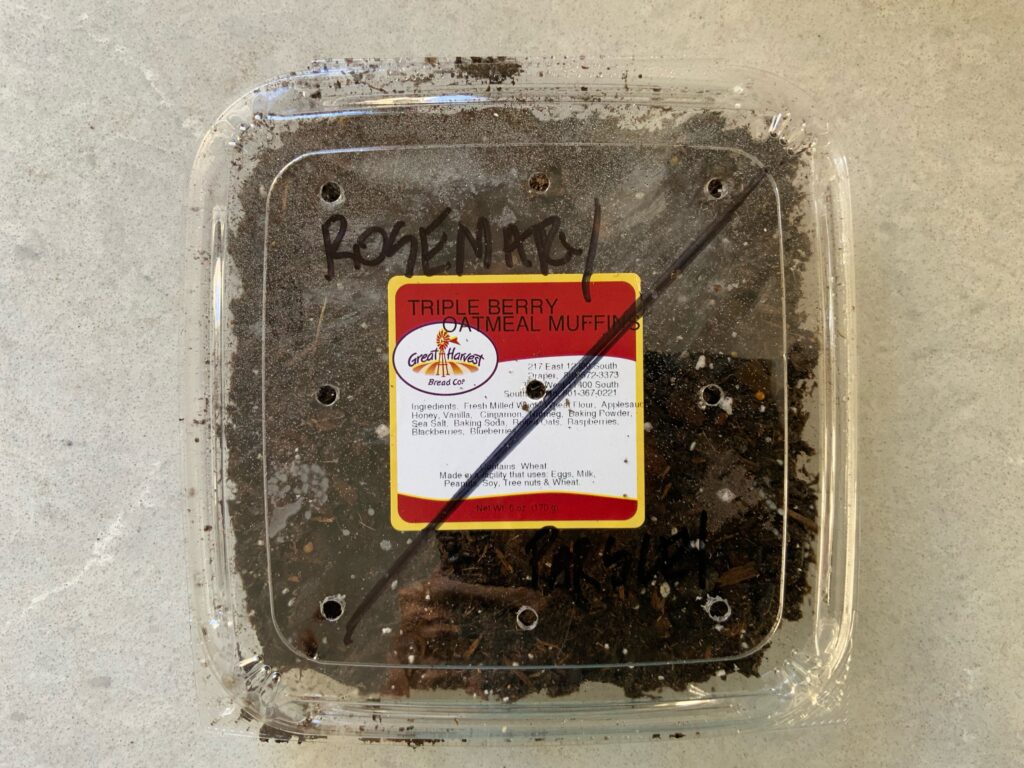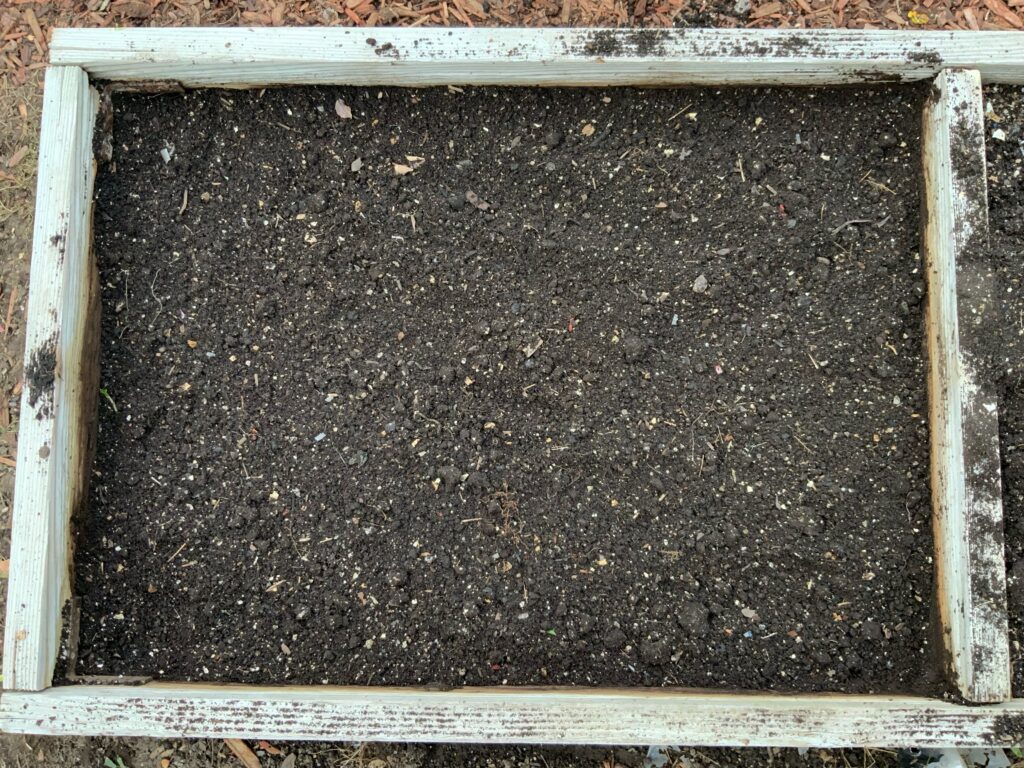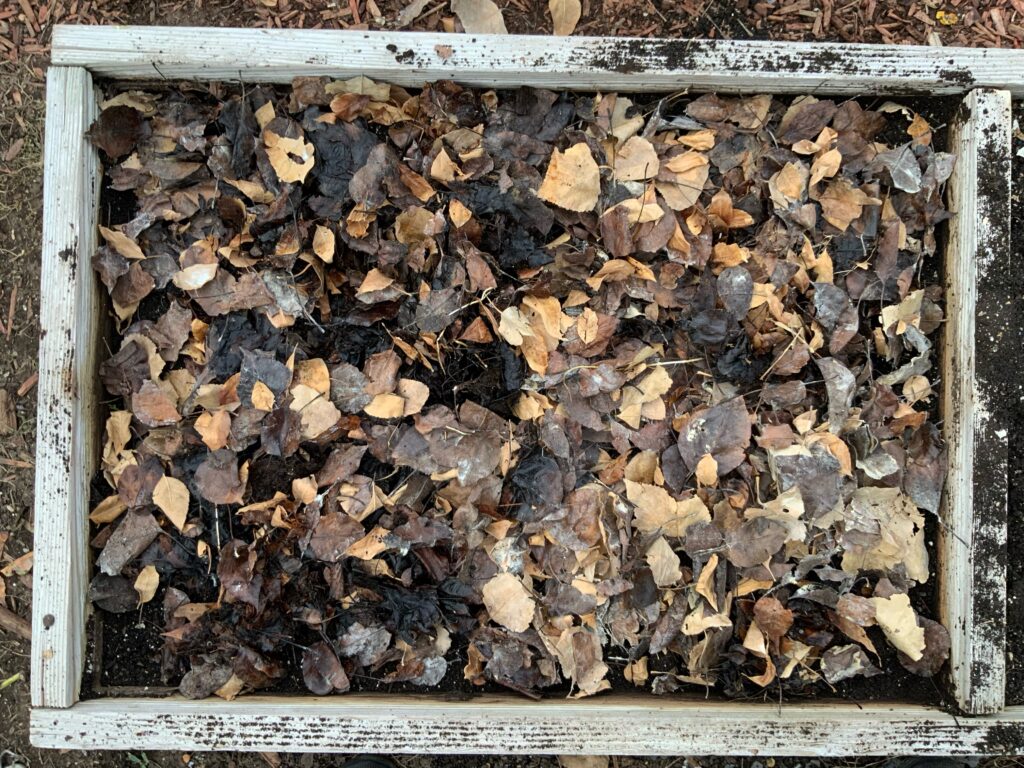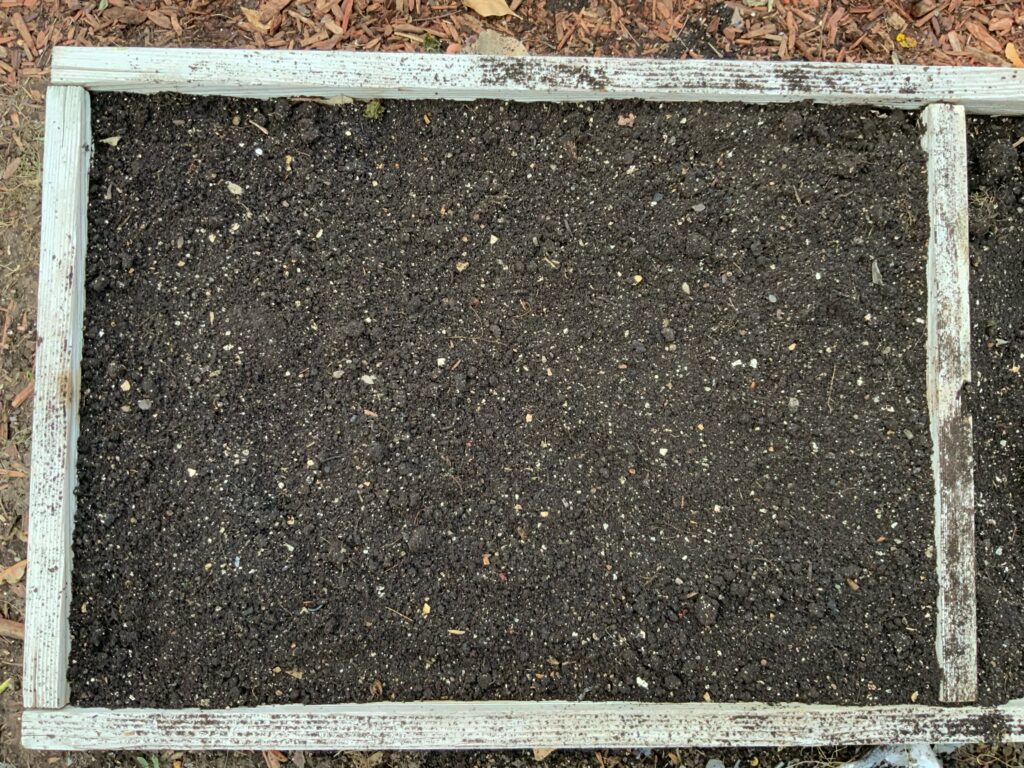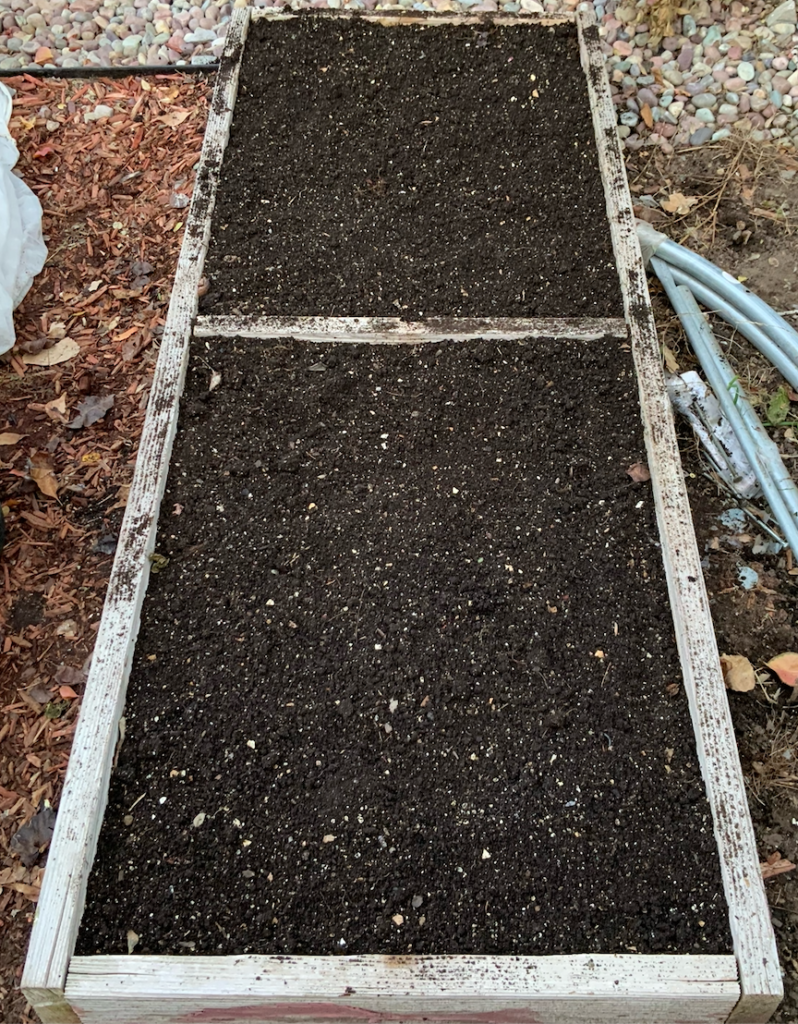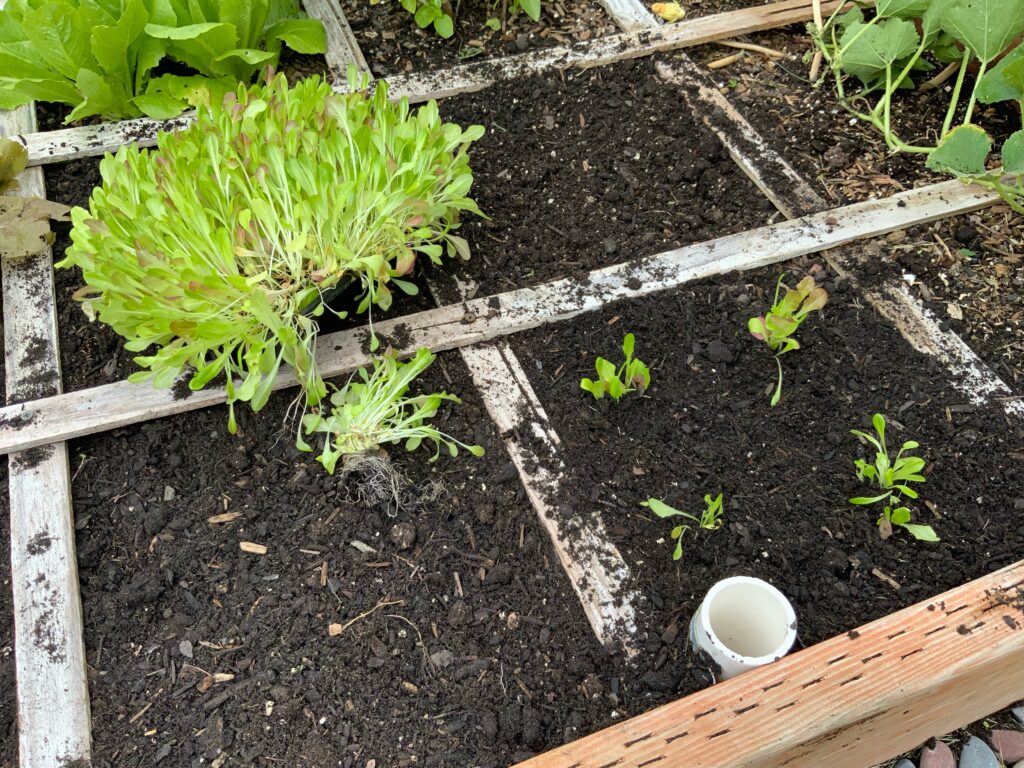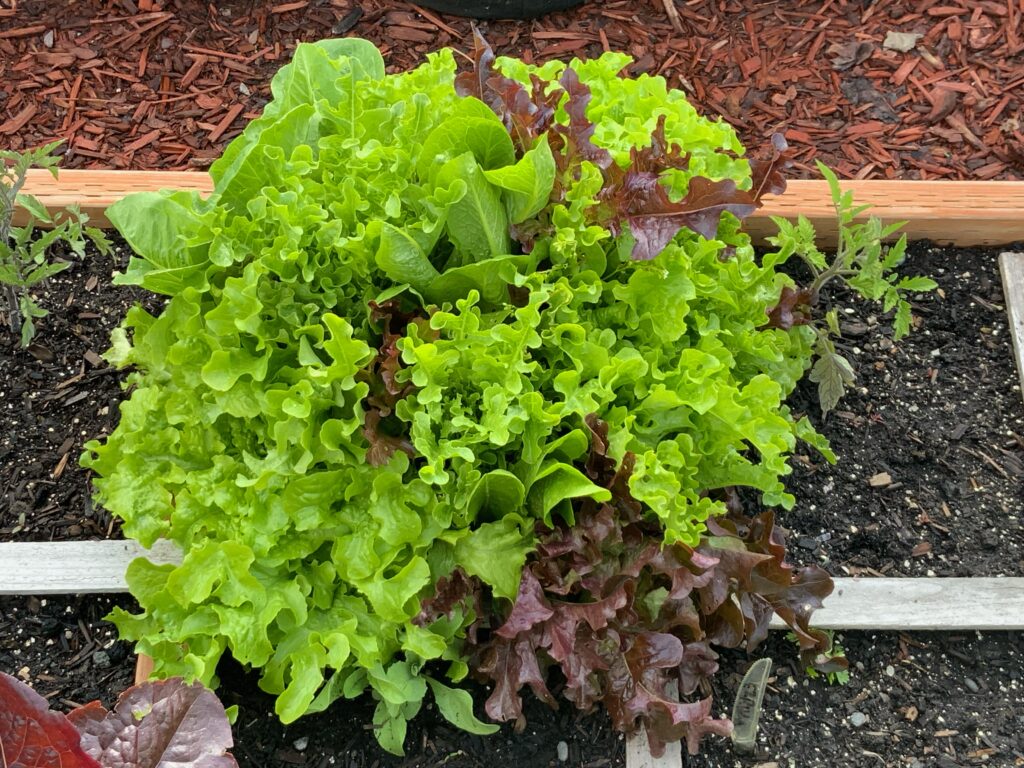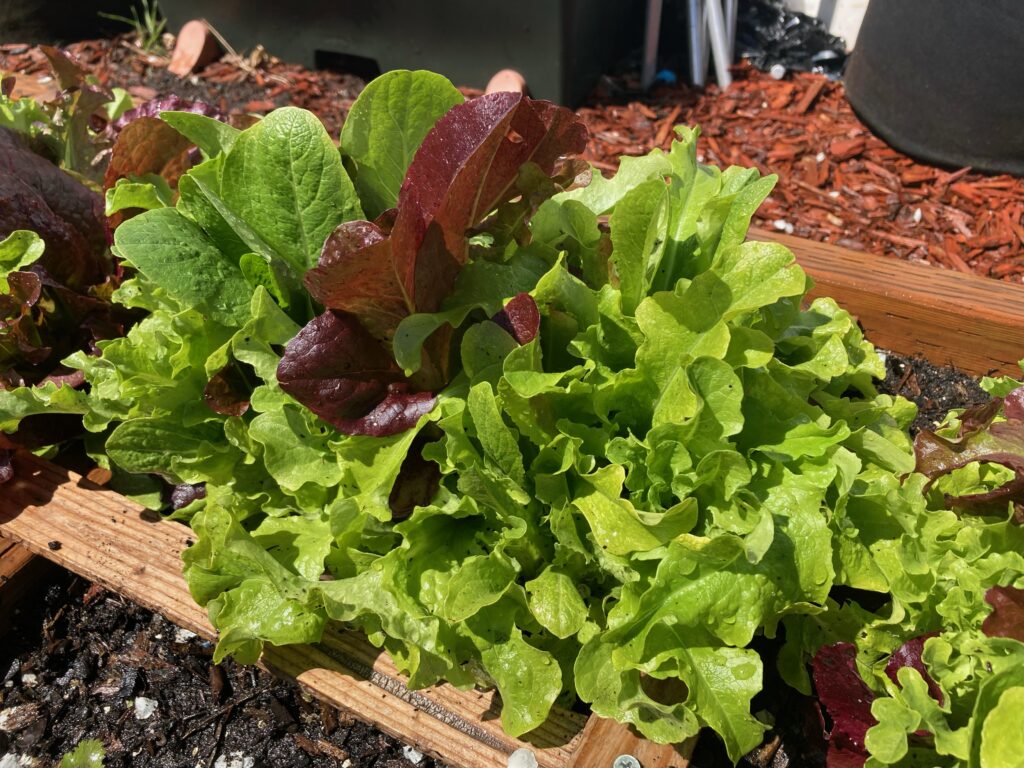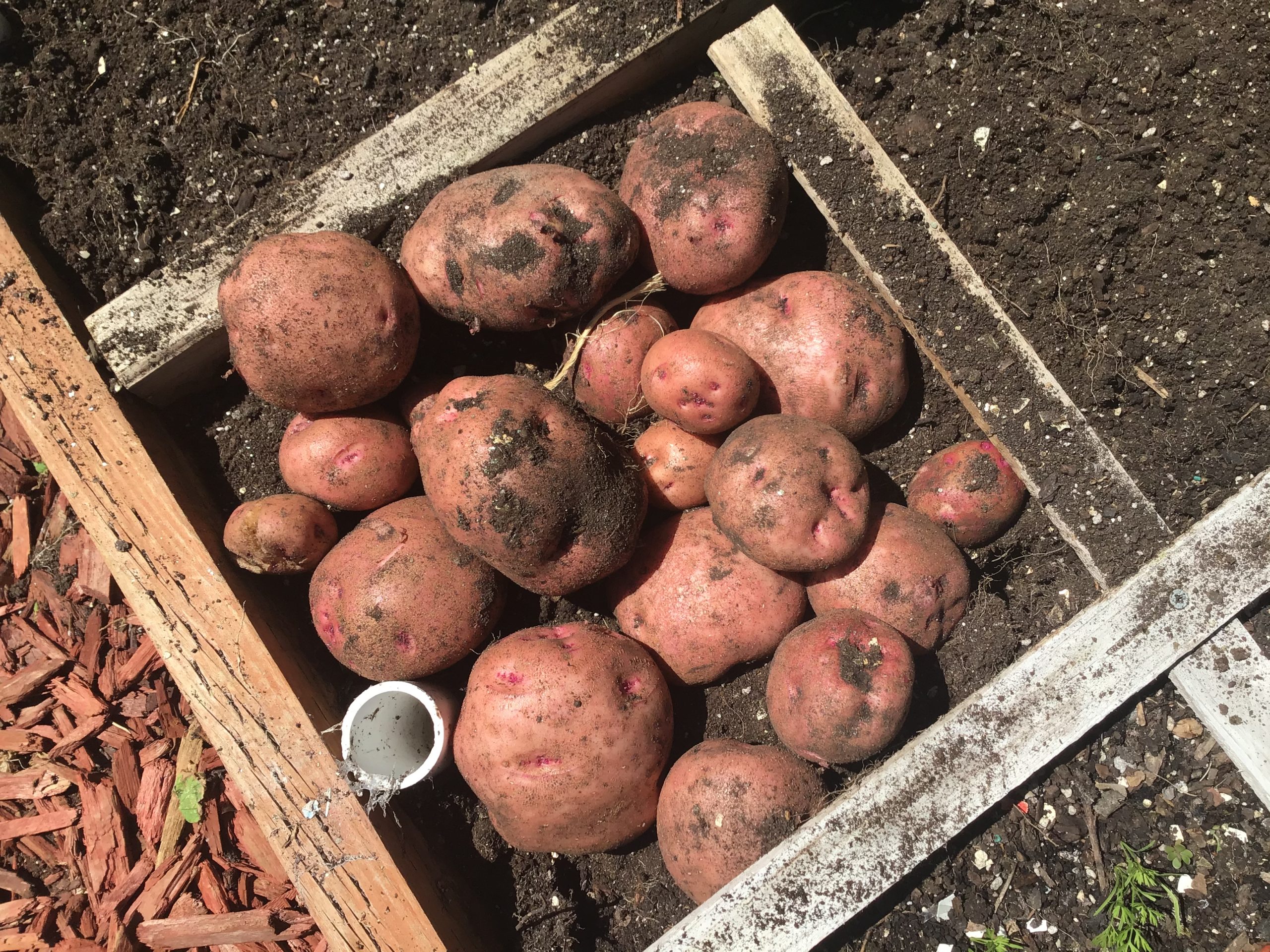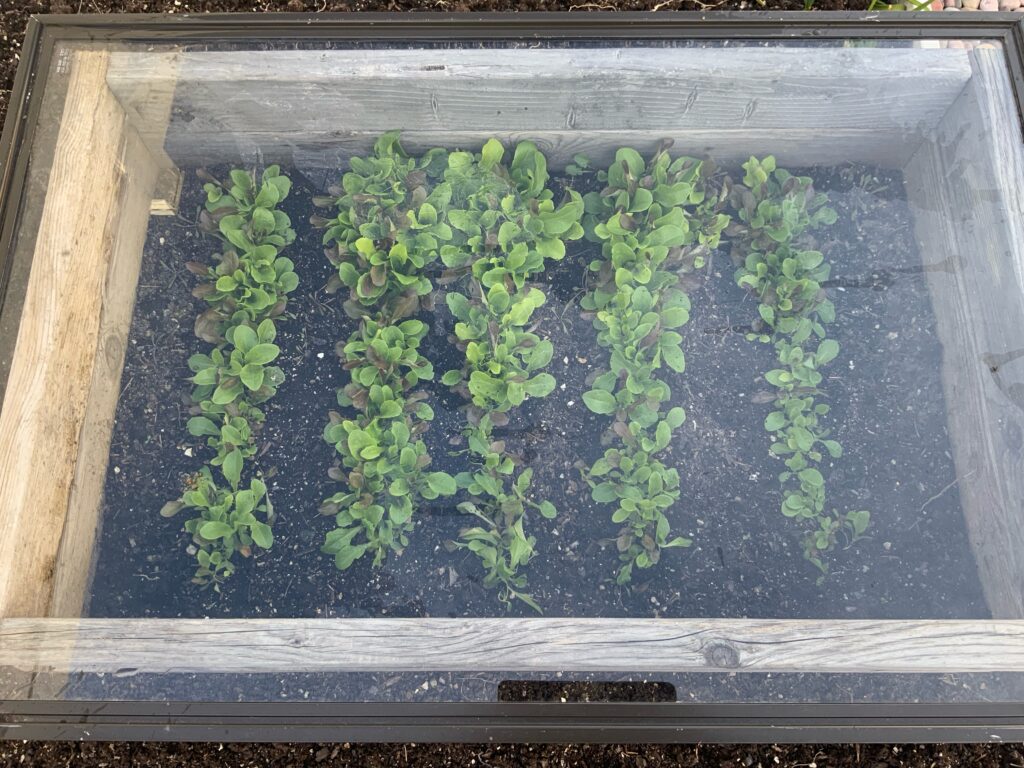 I love the idea of keeping track of what happens in the garden during the year. I looked at my sun box today and tried to remember what and when I planted. Besides the accuracy when doing this, it’s also good to remember challenges and success from the previous year, crop rotation, and any other things you might have learned.
I love the idea of keeping track of what happens in the garden during the year. I looked at my sun box today and tried to remember what and when I planted. Besides the accuracy when doing this, it’s also good to remember challenges and success from the previous year, crop rotation, and any other things you might have learned.
This is a box planted on 11/27 of last year. I love growing lettuces because I try to have a salad every night of the growing season. Even in winter, although those greens are very different. This will be ready in about two and half to three weeks from now. I’ve got another box which was planted later which will be harvested shortly after this box has been exhausted.
By the time both of these boxes are done, my raised beds will take over for the rest of the season with salad greens and all the other crops I love to grow. The boxes will be put away until early fall, and the space taken up by them will be planted in perfect time for my summer items.
